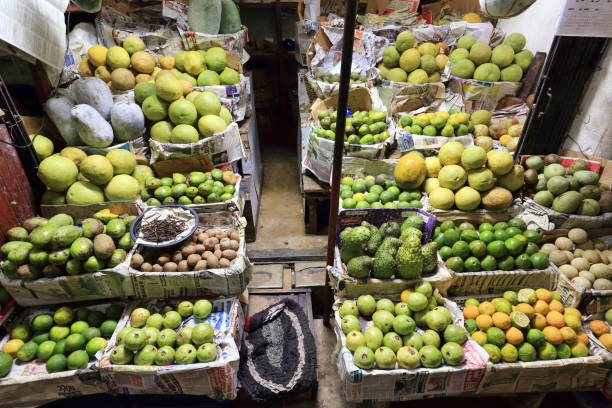Kiwi fruit, with its vibrant green flesh and tangy flavor, is a beloved fruit enjoyed by many around the world. However, understanding when kiwi fruit is in season is essential for enjoying them at their freshest and most flavorful. In this article, we delve into the seasonality of kiwi fruit, exploring when they are at their peak and what factors influence their availability.
Introduction to Kiwi Fruit Seasonality
Kiwi fruit, also known as Chinese gooseberries, are native to China but are now grown in various parts of the world. The seasonality of kiwi fruit varies depending on factors such as geographic location, climate, and agricultural practices.
Understanding the Growing Regions
Kiwi fruit is cultivated in regions with temperate climates conducive to their growth. Major Kiwi fruit-producing countries include New Zealand, Italy, Chile, and China. Each region has its peak growing season, contributing to the availability of kiwi fruit year-round.
Kiwi Fruit Varieties
There are several varieties of kiwi fruit, with the most common being the fuzzy kiwi (Actinidia deliciosa) and the smooth-skinned kiwi (Actinidia chinensis). Each array may have its own unique seasonality and flavor profile.
Peak Season for Kiwi Fruit
In general, the peak season for kiwi fruit varies depending on the hemisphere. In the Northern Hemisphere, including countries like Italy and the United States, kiwi fruit are typically in season from late fall to early spring, with the peak harvest occurring during the winter months. In the Southern Hemisphere, such as New Zealand and Chile, kiwi fruit are harvested from late spring to early fall.
Factors Influencing Kiwi Fruit Season
Several factors influence the seasonality of kiwi fruit, including climate conditions, rainfall patterns, temperature fluctuations, and the health of the crops. Additionally, agricultural practices and advancements in farming techniques can also impact the timing of kiwi fruit availability.
Harvesting and Storage Practices
Kiwi fruit are harvested when fully ripe but still firm to the touch. They are then carefully stored to maintain freshness and flavor. Proper storage conditions, including temperature and humidity levels, are crucial for preserving the quality of kiwi fruit during transportation and distribution.
Availability of Kiwi Fruit in Different Countries
Thanks to global trade networks, kiwi fruit is available in supermarkets and grocery stores worldwide, regardless of the local growing season. Importing kiwi fruit from different regions allows consumers to enjoy them year-round, albeit at varying levels of freshness.
Benefits of Eating Kiwi Fruit
Kiwi fruits are not only delicious but also packed with nutrients. They are an excellent source of vitamin C, vitamin K, vitamin E, and dietary fiber. Consuming kiwi fruit may support immune function, aid digestion, and promote heart health.
Culinary Uses of Kiwi Fruit
Kiwi fruit can be enjoyed in a variety of culinary applications. They can be eaten fresh, added to fruit salads, used as a topping for yogurt or cereal, blended into smoothies, or incorporated into desserts such as tarts, pies, and sorbets.
Kiwi Fruit in Popular Culture
Kiwi fruit has gained popularity in recent years, appearing in recipes, cocktails, and even skincare products. Their vibrant color and unique flavor make them a versatile ingredient in both culinary and cosmetic industries.
Sustainable Farming Practices in Kiwi Fruit Production
Many kiwi fruit producers are adopting sustainable farming practices to minimize environmental impact and promote biodiversity. These practices include organic farming, water conservation, soil management, and biodiversity preservation.
Future Trends in Kiwi Fruit Seasonality
As climate change continues to impact agricultural landscapes, the seasonality of kiwi fruit may shift in response to changing weather patterns. Farmers and researchers are exploring innovative solutions to adapt to these changes and ensure the continued availability of kiwi fruit.
Tips for Selecting and Storing Kiwi Fruit
When selecting kiwi fruit, choose ones that are firm but yield slightly to gentle pressure. Avoid fruits that are overly soft or bruised. Store ripe kiwi fruit in the refrigerator for up to two weeks, away from other fruits, to prevent them from ripening too quickly.
Recipes Featuring Kiwi Fruit
Try incorporating kiwi fruit into your favorite recipes for a burst of flavor and nutrition. Whether in salads, smoothies, desserts, or savory dishes, kiwi fruit adds a refreshing and tangy twist to any meal.
Conclusion: Enjoying Kiwi Fruit Year-Round
In conclusion, knowing when kiwi fruits are in season allows consumers to enjoy them at their peak freshness and flavor. With their nutrient-rich profile and versatility in culinary applications, kiwi fruit is a delightful addition to any diet, offering both taste and health benefits.
